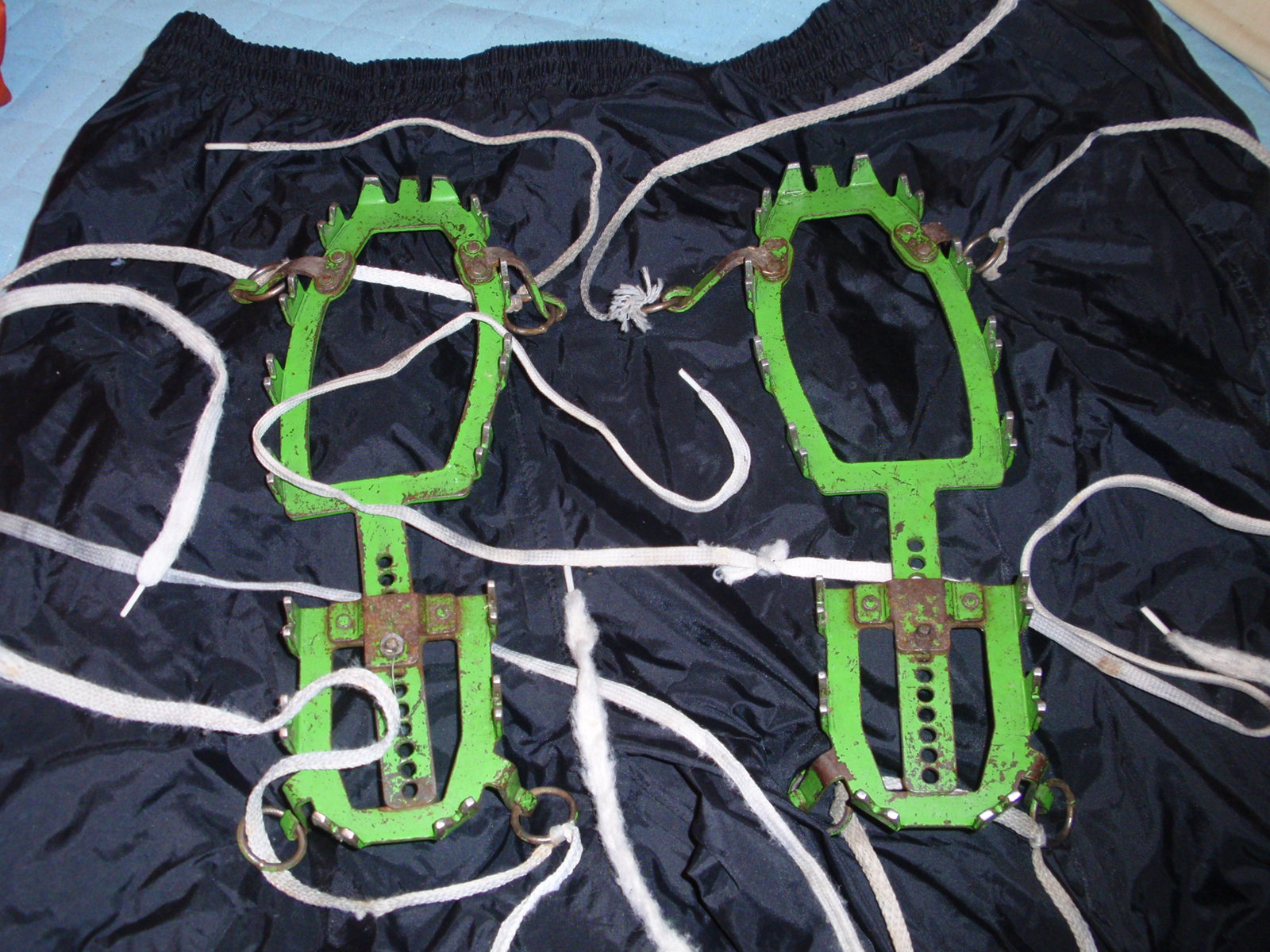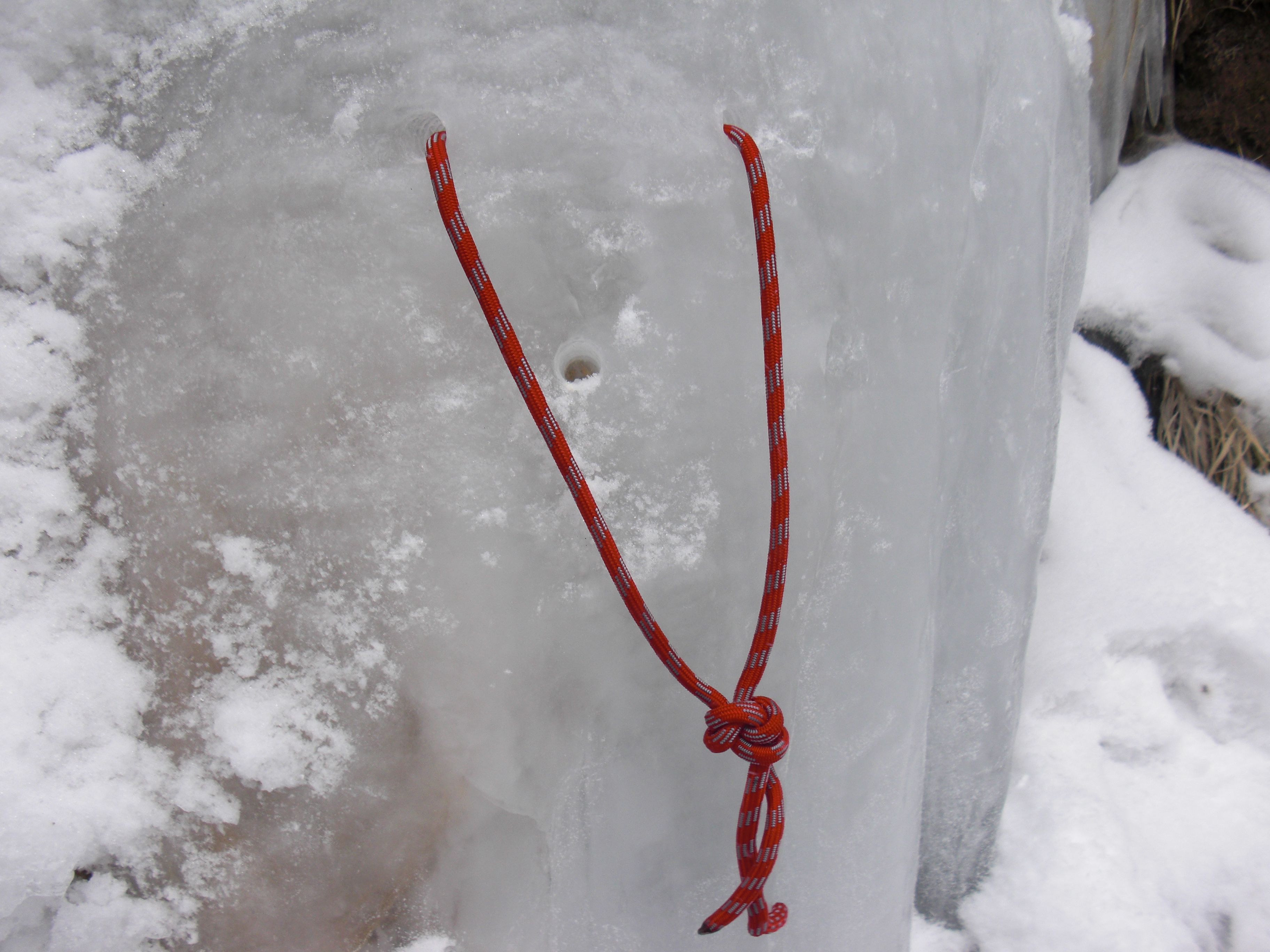|
Front Pointing
Front pointing is a technique used to ascend moderate to steep ice slopes in mountaineering and ice climbing. Also referred to as the German technique, it relies on kicking the "front-points" of specialized ice climbing crampons to embed them in the ice and allow vertical ascent. While extremely secure in sound ice on steep grades, it is not appropriate on moderate grades, where the traditional technique of "flat-footing" (French technique) is used. A typical technical ice-climbing crampon has 14 points. Single-pointed "monospikes" are also made for front-pointing vertical ice. All "front-point" crampons are rigid "step-in" style, with a locking cam-action lever on their heel to securely attach them to a technical mountaineering boot Mountaineering, expedition or high altitude boots are a type of footwear used in mountain climbing. They are designed specifically for moving over harsh terrain. Design Not to be confused with hiking boots, mountaineering boots are usually tal ... [...More Info...] [...Related Items...] OR: [Wikipedia] [Google] [Baidu] |
Crampon
A crampon is a traction device that is attached to footwear to improve mobility on snow and ice during ice climbing. Besides ice climbing, crampons are also used for secure travel on snow and ice, such as crossing glaciers, snowfields and icefields, ascending snow slopes, and scaling ice-covered rock. There are three main attachment systems for footwear: step-in, hybrid, and strap bindings. The first two require boots with welts, or specialized mountaineering boots with dedicated front and rear lugs, as a cam-action lever attaches the crampon to the heel. The last type (strap bindings) are more versatile and can adapt to virtually any boot or shoe, but often do not fit as precisely as the other two types. Oscar Eckenstein designed the first 10-point crampon in 1908, dramatically reducing the need for step cutting. This design was then made commercially available by the Italian Henry Grivel. Characteristics Materials Crampons are made of steel alloy, light weight alum ... [...More Info...] [...Related Items...] OR: [Wikipedia] [Google] [Baidu] |
Mountaineering
Mountaineering or alpinism, is a set of outdoor activities that involves ascending tall mountains. Mountaineering-related activities include traditional outdoor climbing, skiing, and traversing via ferratas. Indoor climbing, sport climbing, and bouldering are also considered variants of mountaineering by some. Unlike most sports, mountaineering lacks widely applied formal rules, regulations, and governance; mountaineers adhere to a large variety of techniques and philosophies when climbing mountains. Numerous local alpine clubs support mountaineers by hosting resources and social activities. A federation of alpine clubs, the International Climbing and Mountaineering Federation (UIAA), is the International Olympic Committee-recognized world organization for mountaineering and climbing. The consequences of mountaineering on the natural environment can be seen in terms of individual components of the environment (land relief, soil, vegetation, fauna, and landscape) and locat ... [...More Info...] [...Related Items...] OR: [Wikipedia] [Google] [Baidu] |
The Freedom Of The Hills
''The'' () is a grammatical article in English, denoting persons or things that are already or about to be mentioned, under discussion, implied or otherwise presumed familiar to listeners, readers, or speakers. It is the definite article in English. ''The'' is the most frequently used word in the English language; studies and analyses of texts have found it to account for seven percent of all printed English-language words. It is derived from gendered articles in Old English which combined in Middle English and now has a single form used with nouns of any gender. The word can be used with both singular and plural nouns, and with a noun that starts with any letter. This is different from many other languages, which have different forms of the definite article for different genders or numbers. Pronunciation In most dialects, "the" is pronounced as (with the voiced dental fricative followed by a schwa) when followed by a consonant sound, and as (homophone of the archaic p ... [...More Info...] [...Related Items...] OR: [Wikipedia] [Google] [Baidu] |
Crampons
A crampon is a traction device that is attached to footwear to improve mobility on snow and ice during ice climbing. Besides ice climbing, crampons are also used for secure travel on snow and ice, such as crossing glaciers, snowfields and icefields, ascending snow slopes, and scaling ice-covered rock. There are three main attachment systems for footwear: step-in, hybrid, and strap bindings. The first two require boots with welts, or specialized mountaineering boots with dedicated front and rear lugs, as a cam-action lever attaches the crampon to the heel. The last type (strap bindings) are more versatile and can adapt to virtually any boot or shoe, but often do not fit as precisely as the other two types. Oscar Eckenstein designed the first 10-point crampon in 1908, dramatically reducing the need for step cutting. This design was then made commercially available by the Italian Henry Grivel. Characteristics Materials Crampons are made of steel alloy, light weight alum ... [...More Info...] [...Related Items...] OR: [Wikipedia] [Google] [Baidu] |
Mountaineering Boot
Mountaineering, expedition or high altitude boots are a type of footwear used in mountain climbing. They are designed specifically for moving over harsh terrain. Design Not to be confused with hiking boots, mountaineering boots are usually taller, stiffer, and insulated. The boots can be made of leather, plastic, or modern synthetic materials like Kevlar. The extra height and stiffness of mountaineering boots helps support the climber in steep terrain where flexible boots could cause unsure footing and possibly result in a fall. This extra stiffness is traditionally achieved through the use of a full steel shank, though some manufacturers have begun to use carbon fiber to create the necessary stiffness. Mountaineering boots are typically designed to be used with crampons. To achieve compatibility with crampons, welts are moulded into the toe and heel of the boot, providing a platform for the crampon to attach to. The stiffness of the boot enhances the precision of the c ... [...More Info...] [...Related Items...] OR: [Wikipedia] [Google] [Baidu] |



